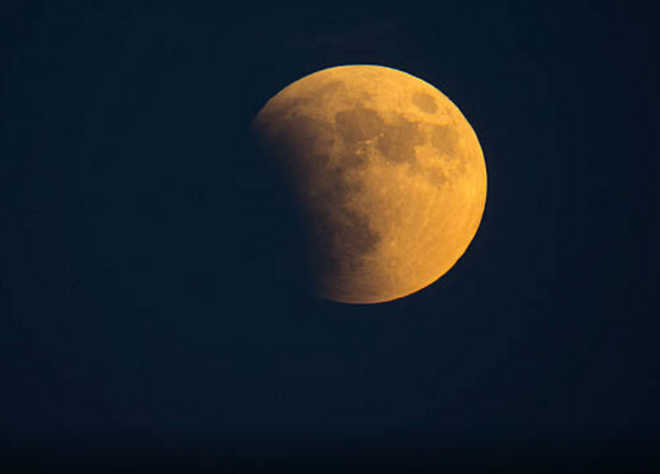
Photo for representational purpose only. iStock
Kolkata, August 5
A partial lunar eclipse will take place on August 7 night and will be visible from across the country.
"Starting from 10.52 pm, the full moon will enter the Earth's shadow in space and create a spectacular celestial phenomenon, which is commonly known as partial lunar eclipse.
This will be the first properly visible lunar eclipse this year," Debiprosad Duari, Director Research and Academic, M P Birla Planetarium, said on Saturday.
"On February 11 this year there was a penumbral eclipse of the moon. It was an event where the moon passed not through the direct shadow of the earth but through its periphery and thus it could not be discernible by most of the population," he said.
The partial lunar eclipse this time would be visible from the whole of Asia and Australia and most parts of Europe and Africa, Duari said adding: "People in North and South America will be not be able to see it because it will be daytime there”.
The lunar eclipse will start at around 10.52 pm on the night of August 7 and will continue till 00.48 am IST.
"The greatest eclipse, that is when the Moon will be covered to the maximum extent will be around 11.50 pm. The magnitude of the eclipse, which means the fraction of the lunar diameter, will be eclipsed at the greatest eclipse moment at around 0.25. The eclipse will last about an hour and 55 minutes," he said. "The total eclipse will be visible at all places in India.”
A lunar eclipse occurs when the Sun, the Earth and the Moon, are aligned perfectly. The Sun's rays fall on the Earth and the Moon enters the patch of where the Earth’s shadow falls.
A lunar eclipse necessarily takes place at full moon.
The shadow is composed of two cone-shaped parts, one nested inside the other. The outer shadow or penumbra is a zone where Earth shadow is partial and blocks some, but not all of, the Sun's rays.
In contrast, the inner shadow or umbra is a region where Earth blocks all direct sunlight from reaching the Moon. When a part of the Moon passes through the umbra, a partial lunar eclipse is seen.
The next lunar eclipse will occur on January 31, 2018. It will be a total eclipse visible from all parts of the Indian sub-continent, Duari said.
"Lunar eclipses are completely safe to view with the naked eye. No special filters are required to protect your eyes like those used for solar eclipses. One does not need a telescope to watch the eclipse, although a good pair of binoculars will enhance the experience," he said.
"The sky permitting, since it is the rainy season and the sky remains overcast most of the time, it will be an wonderful opportunity to experience this celestial event and to take photographs if possible," he added. PTI



























